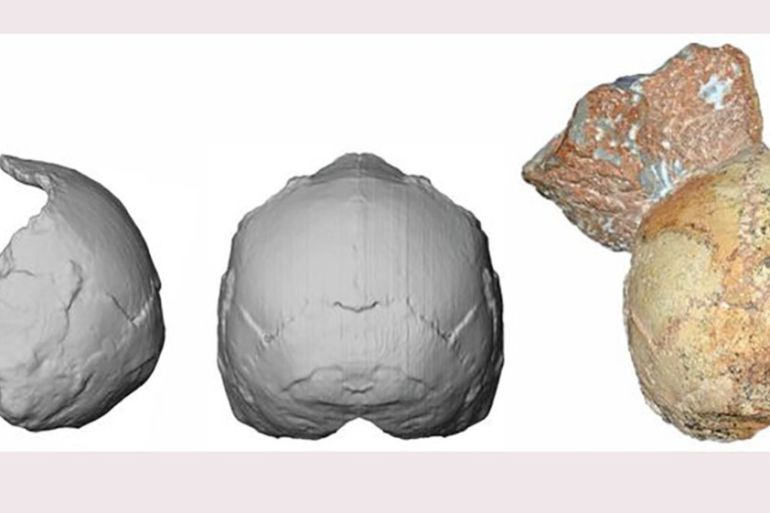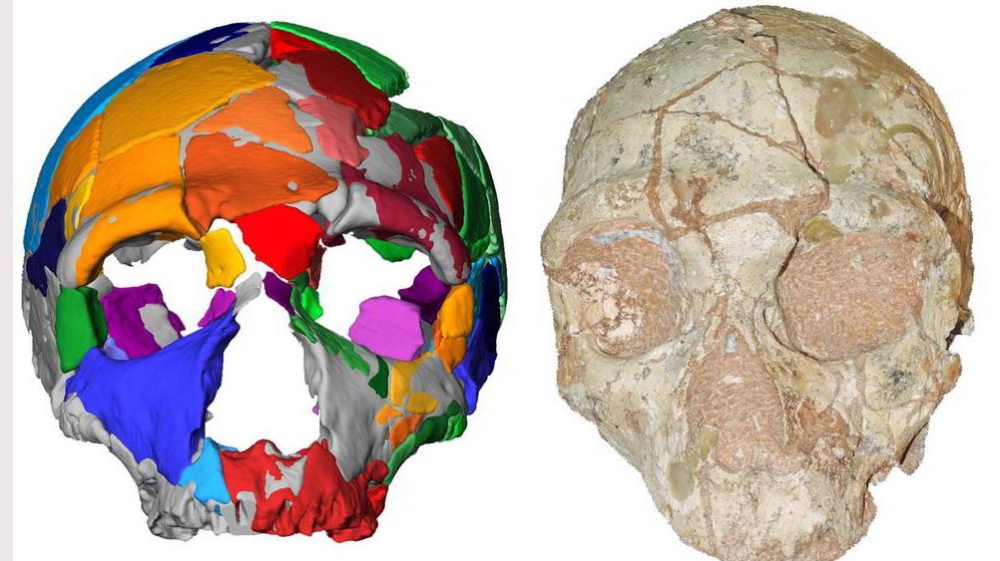Recovered chunk of skull is ‘oldest human fossil outside Africa’
If verified, the new analysis may prove that Homo sapiens began leaving Africa much earlier than previously thought.

Scientists claim to have identified the earliest sign of our species outside of Africa with the recovery of a chunk of skull from a cave in southern Greece.
The skull is estimated to be at least 210,000 years old, making the fossil 16,000 or more years older than an upper jaw bone from Israel previously thought to be the earliest modern human find outside of Africa.
Keep reading
list of 4 itemsRwanda genocide: ‘Frozen faces still haunt’ photojournalist, 30 years on
Underground tunnels found in Israel from Jewish revolt against Romans
Lost in Orientalism: Arab Christians and the war in Gaza
If verified, the new analysis may prove that Homo sapiens began leaving Africa much earlier than previously thought.
The fossil in question – a segment from the rear of a skull – was found decades ago during an excavation in the late 1970s of the Apidima Cave in the southern Peloponnese region of Greece and later kept in a University of Athens museum.
Only with the advent of new technology has it become possible to study the find in detail, according to Katerina Harvati of the University of Tuebingen in Germany, who was invited to do so.
“We can now produce a CT scan to try to restore the specimen to its original anatomy,” Harvati, who along with others reported the results of their analysis in the journal Nature on Wednesday, said.
“We dissected virtually more than 60 little fragments of bone and tried to put them in their original position and removed sediments from cracks,” she said, adding that two teams, each following different criteria, produced four unique reconstructions, which were then analysed.

“We compared them to other fossil skulls from all over Europe and Africa from the same, or similar, time period,” said Harvati.
Researchers concluded that the cranial fragment, labelled Apidima 1, came from a Homo sapien. It was found along with another complete skull, Apidima 2, which was identified as belonging to a Neanderthal.
Excitement and uncertainty
Other fossils of early humans found outside of Africa suggest brief ventures before the mass departure of Homo sapiens about 70,000 years ago when the species spread out from the continent to colonise vast swaths of territory around the world.
Scientists have concluded such excursions were failures, with the Homo sapiens dying out, leaving no genetic legacy in people alive today.
While some scientists said it “made a lot of sense” that a Homo sapien fossil should be found in southeastern Europe, others were less convinced.
Warren Sharp, an expert on dating fossils at the Berkeley Geochronology Center in California, said the age of 210,000 years is “not well supported by the data”.
Ian Tattersall of the American Museum of Natural History in New York called the case for identifying the fossil as a Homo sapien “pretty shaky”.
Its shape is suggestive, he told The Associated Press, but it is incomplete and lacks features that would make the identification firmer.
In response, Harvati said the back of the skull is very useful for differentiating Homo sapiens from Neanderthals and other related species and that several lines of evidence support the identification.
However, she said at a press conference that it is not clear whether scientists will be able to recover DNA or proteins from the fossil to confirm their theories.